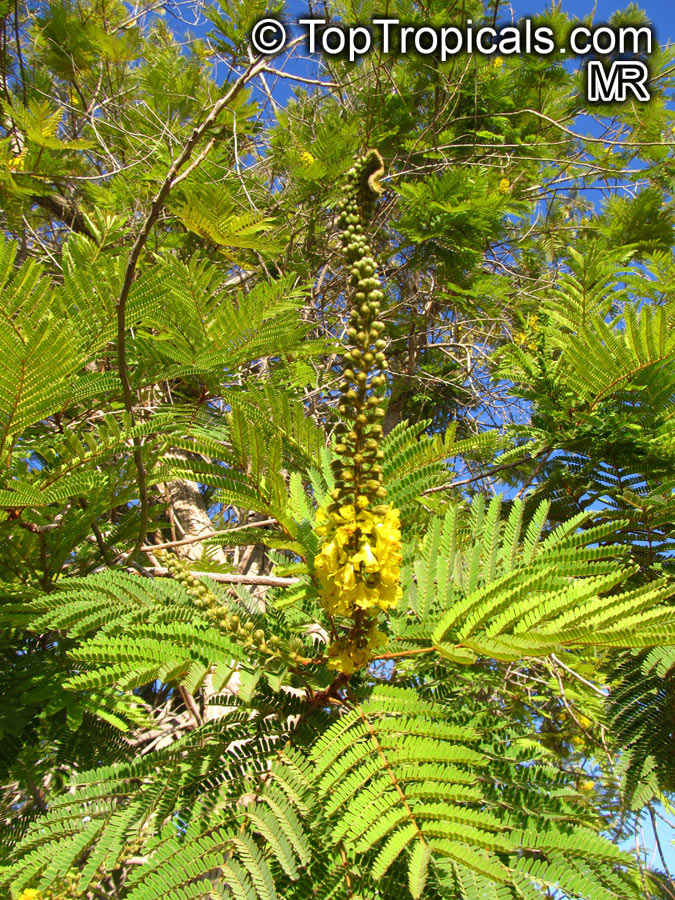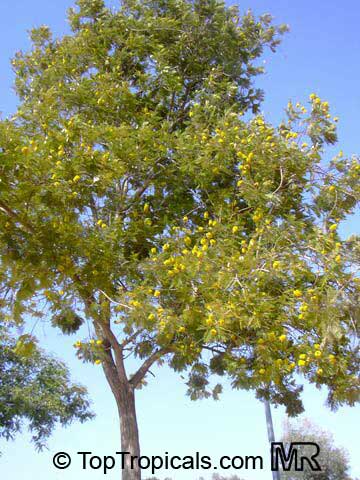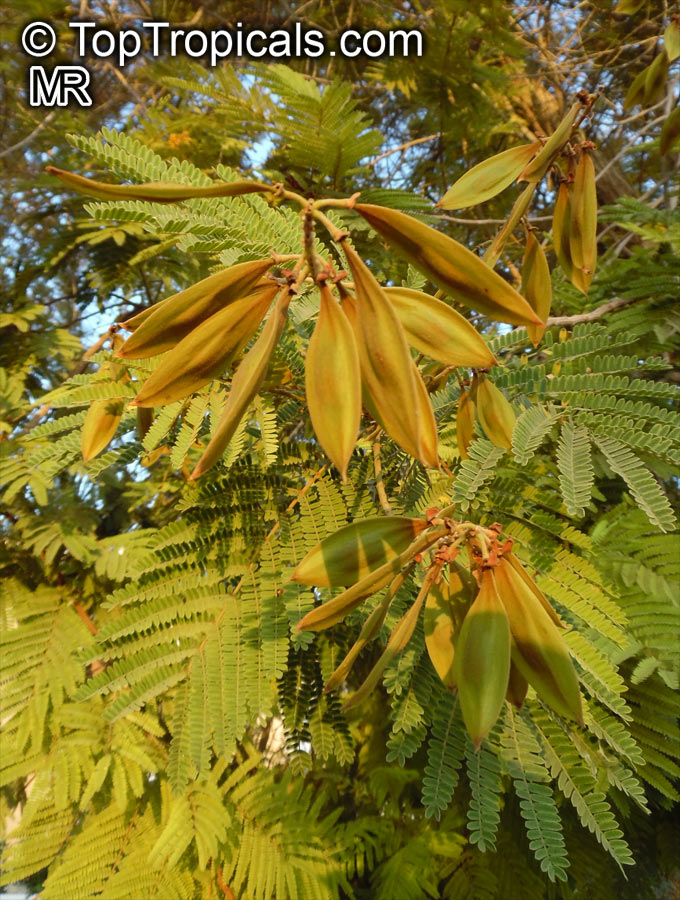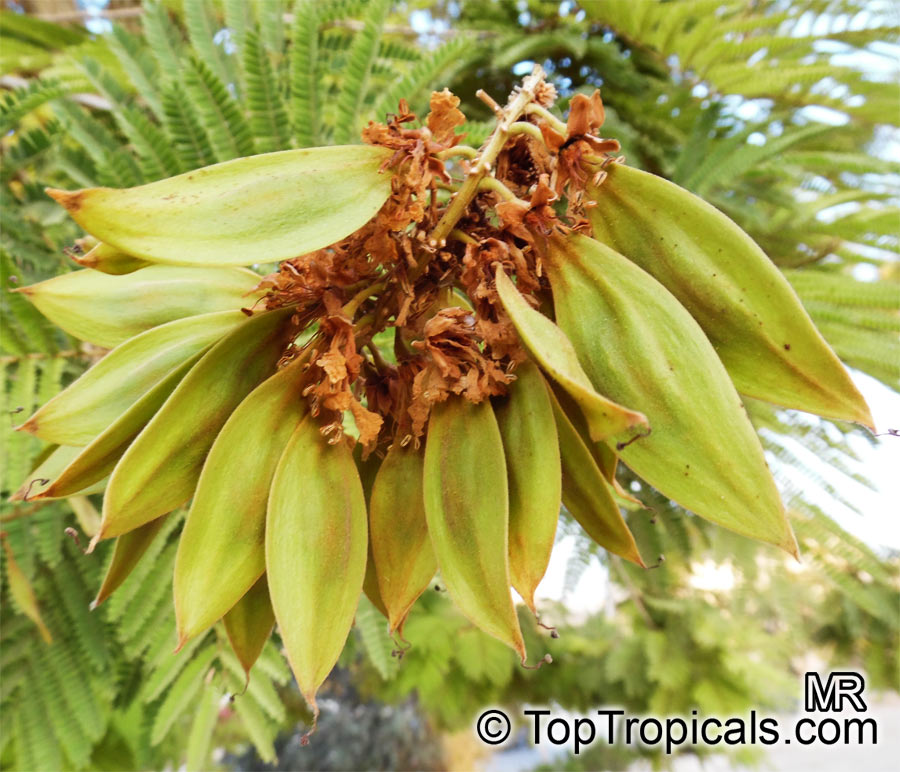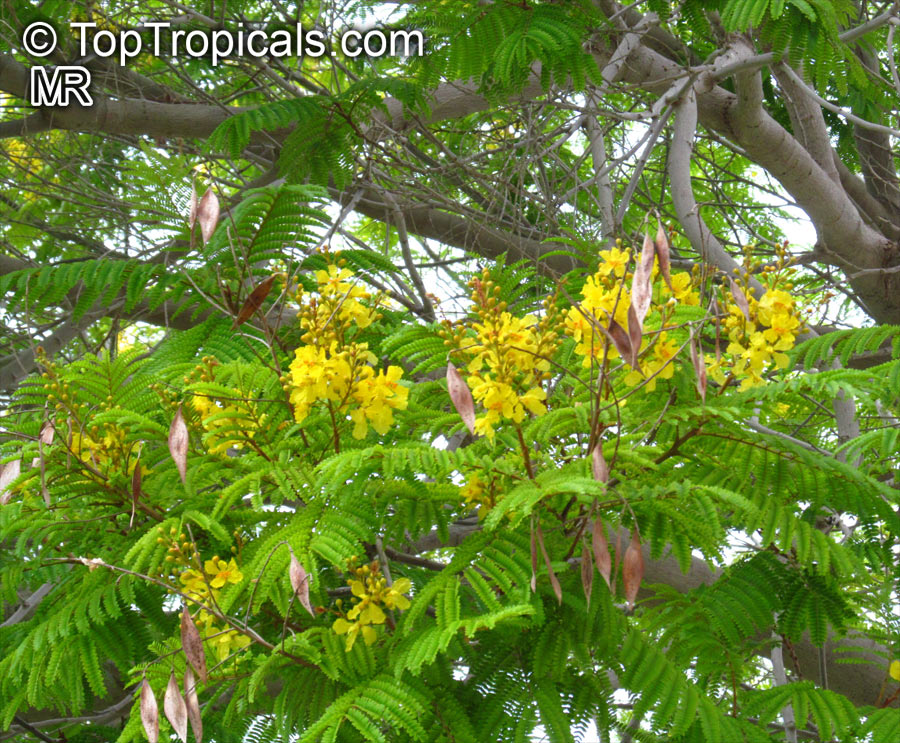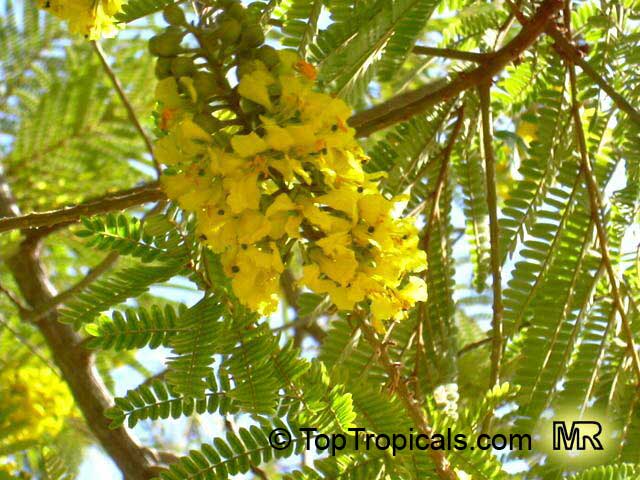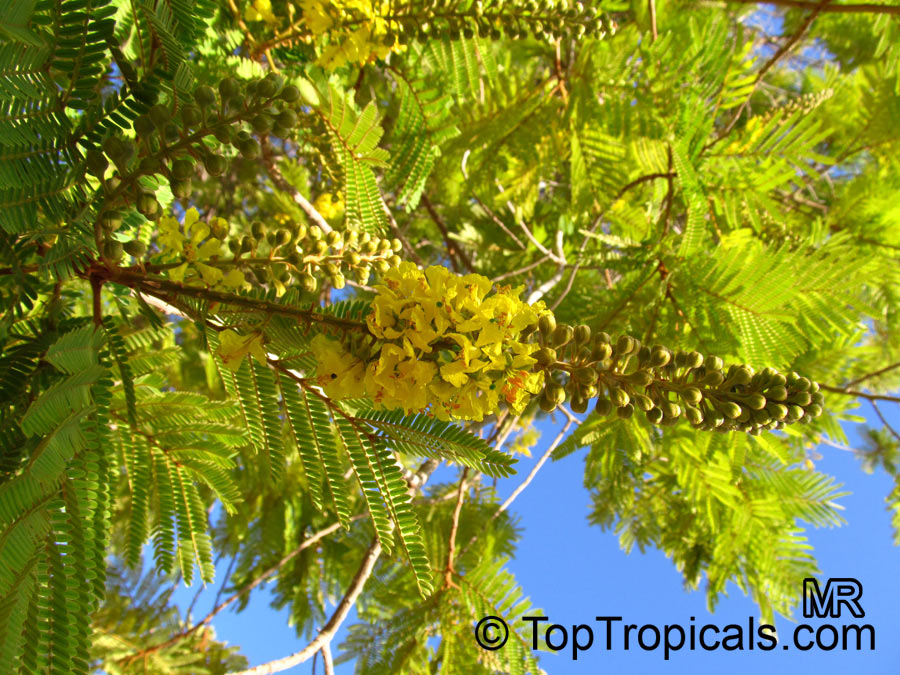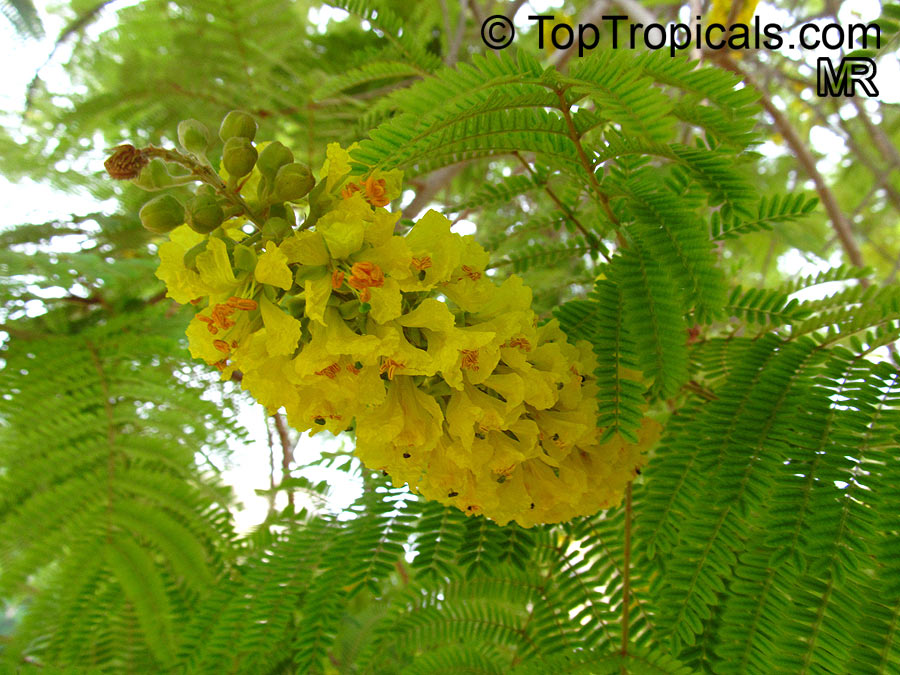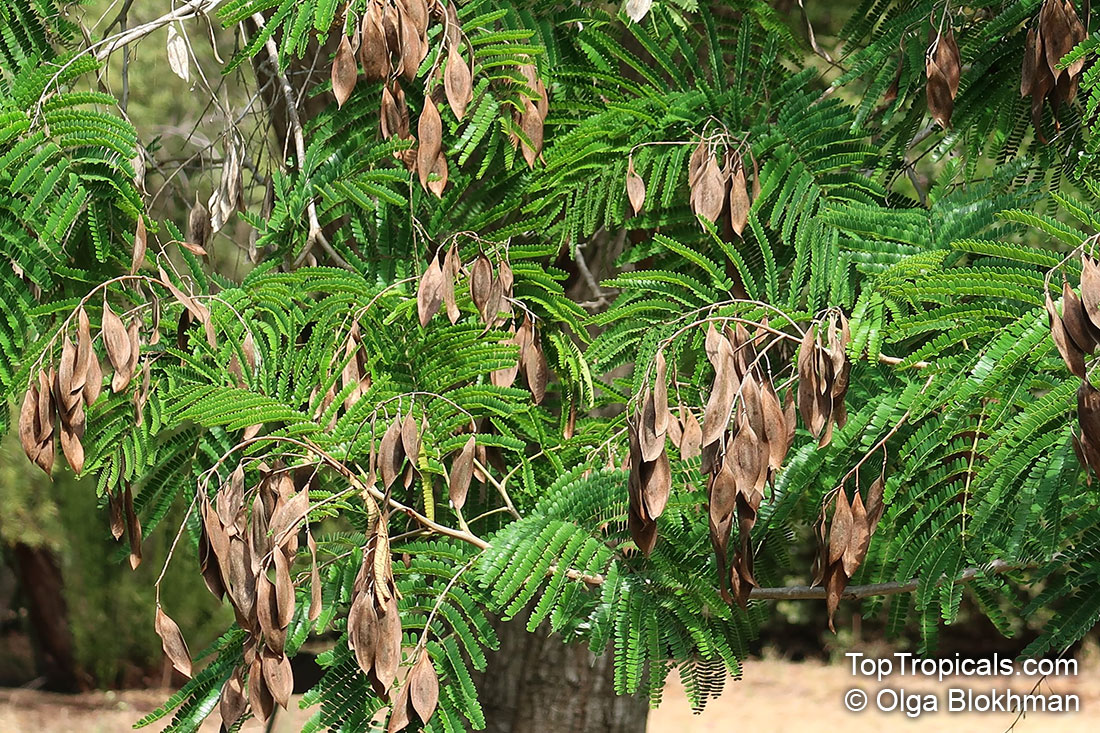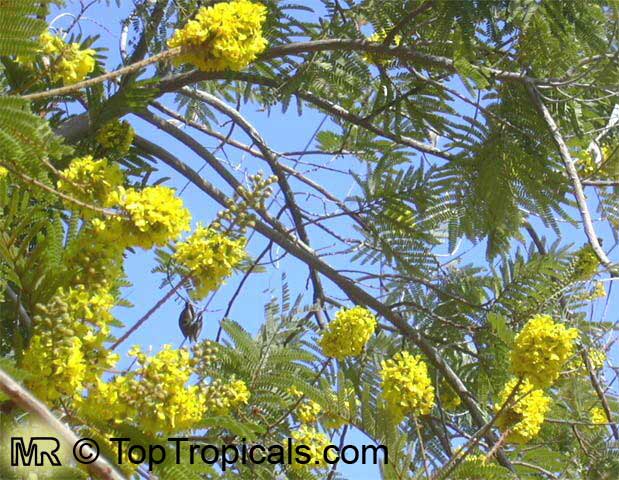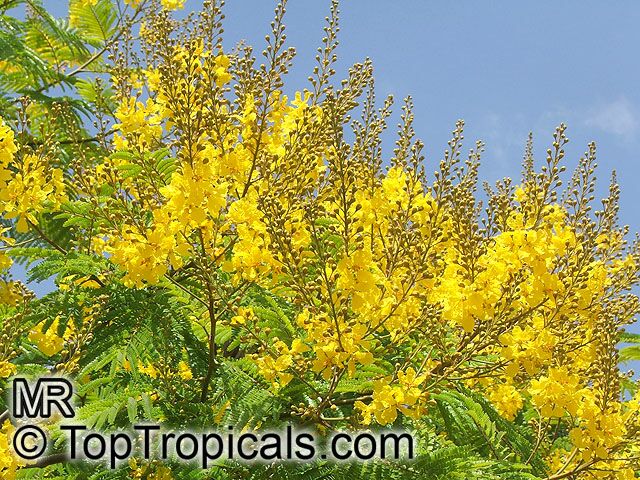Peltophorum africanum (African Wattle)
Top Tropicals Plant Encyclopedia
Botanical name: Peltophorum africanum
Common names: African Wattle, Weeping Wattle
Family: Fabaceae
Subfamily: Caesalpinioideae
Origin: South Africa










Peltophorum africanum (African Wattle) is a native plant to South Africa and is widely known for its ethnomedical properties. It is a fast-growing small to medium-size semi-deciduous to deciduous tree that reaches heights of 10-20 ft with a spreading crown and bark that is smooth and grey on the young branches. The leaves are compound, bipinnate, with 4-7 pairs of pinnae bearing up to 23 pairs of feathery leaflets. They are oblong in shape, have a dull green top side and a pale green underside, and the apex is rounded with a fine, hairlike tip. The flowers are bright yellow and crinkled, about 5 inches in diameter and hang in dense clusters. They attract butterflies and hummingbirds. The tree is tolerant of seaside conditions and salt, and it's grown in USDA Zones 9-11. It is also a great tree for bonsai, as it develops an adult shape and thick corky bark in just 2-4 years, with leaves that are much reduced.
When growing Peltophorum africanum, it should be planted in a well-drained soil in full sun or semi-shade. It needs moderate water and is frost-resistant and drought-tolerant. When grown as a bonsai tree or for shade protection, it needs protection for the first 2-3 years and should be watered during dry spells. In cold regions, it can be grown in pots and needs frost protection, regular watering, good drainage, and should be placed in a sunny location. It also likes to have its roots shaded from direct sunlight.
Similar plants: Peltophorum africanum (African Wattle)
Recommended Fertilizer: SUNSHINE Megaflor - Bloom Nutrition Booster
Recommended Fertilizer: SUNSHINE Megaflor - Bloom Nutrition Booster
This item can not be shipped. Pick up only. We can provide local delivery around Ft. Myers or Sebring, Florida. Contact us for an estimate. Non-pickup orders are subject to restocking fees.
